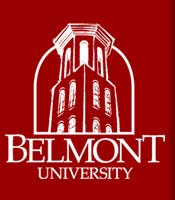 We should have knocked on wood yesterday when discussing our luck with weather. Cleveland began slowly with a downpour. Instead of attending the Rock and Roll Hall of Fame Museum first, the group started with a brunch and class discussion.
We should have knocked on wood yesterday when discussing our luck with weather. Cleveland began slowly with a downpour. Instead of attending the Rock and Roll Hall of Fame Museum first, the group started with a brunch and class discussion.
By discussing the sociology of Detroit, transitioning into Cleveland felt a smooth upgrade. As far as economy goes my research on Cleveland informed me that it tasted the bitterness of the decline in the car industry in the 60s while Detroit experienced this beginning in the 80s.
Walking down the streets of Cleveland not a sound filled the air. The videos online laughed at Cleveland’s lack of tall buildings downtown, and the soundless streets yelled to us that this was not Seattle, Portland, or Chicago. Cleveland’s atmosphere seemed what it might be like a bomb had gone off ten years ago and this is how far the city has come - dreary but thriving. After seeing the city, I realized how the city’s history with the citywide fire, industry decline, and poor sports teams has affected it.
Our group finished up some coffee discussion and went to make our appointment with the House of Blues. Shout out to the House of Blues giving us Belmonters a private tour of the folk art it displays on its walls! After attending art museums in El Paso and Chicago this tour meant more for our group. The International House of Blues Foundation is a non-profit organization dedicated to bringing arts to schools and communities through programs that promote cultural understanding and creative expression through music and art. This tour enlightened us all of the therapeutic essence of the arts for youth, those suffering from depression, and mental health patients as well as everyday artists.
Directly following our tour into the depths and secret passages within the House of Blues itself, we ended up in another spot viewing art and history, the Rock and Roll Hall of Fame. Only having two hours, I thought there was plenty of time, but I was mistaken. In fact, the bottom level took me the entire time. Thus, pulling me into my other thoughts of how history of pop, rock, or music culture in general tells a lot about each generation.
Sex, drugs, and rock n’ roll intoxicated the generation before me even when their parents said this music was from the devil. Rebels of the young generation shelled out cash to see the Beatles or Elvis. Founders of Rock N’ Roll were young and alive which quickly pushed them to celebrity status. Once this status arises people become obsessed. This obsession in celebrity and music creates movements in society, fashion, and politics. In our tour of America we have been asking what unifies us. Attempting to make conversation with total strangers over the course of the trip, I know that I can always mention a star or celebrity in order to receive a response. Celebrities connect most Americans because they are more than that. They are icon of generations or even regions from west to east or north to south.
Rock and Roll Hall of Fame displayed lyrics, guitars, clothes, letters, old diaries of lyrics, the mask from Thriller, Mic Jagger jeans, an Elvis mobile, sparkling, feather boas, and high stilettos. Each screamed a high-pitched rocker yell of not only the artist but of the generation and history of a place in America. The celebrities and their songs ignite vivid memories for those who come to see these relics of the past.
During our drive back to the bus, Big Mamma, I thought of pictures my mom has shown me when she was in high school in the 70s. Golden in hair and breath, my mother illuminated in pictures with her long, straight hippie hair and bell-bottoms with a peace sign in hand. How connected I felt to her while miles and ages away from her at seventeen- self. I now see a connection for Americans regardless of age and generation. It is a connection to music and celebrities that produce it whether in film, TV, or with teased out hair, big white-rimmed glasses, and feathery glitz.
Coming back to downtown Cleveland later on for a free Roots show, thanks to the House of Blues, I hope someday my children will connect to my music. The bigger picture became clear as I drew a connection to the work that the International House of Blues Foundation continued to pursue through the arts in Cleveland. Even though the city had been hit hard by industry collapse, its push for the arts and music has brought it to life again.
Not only has a new center on the arts brought in an artist culture, the Rock and Roll Hall of Fame represents a dependence on the arts. Cleveland may not have tons of buildings, but it does have this Rock and Roll Museum to put it back on the map. Anytime Cleveland has been mentioned, as a destination the only aspect people know about the city is this museum. Further research proved my assumptions that the city built it to draw in tourists, and in turn, stimulate the city’s economy. With that, when they were selecting the city to house the hall of fame museum, Cleveland put down 65 million to win the ballot. Now Cleveland can turn its cheek away from its past an no longer be the mistake by the lake.
